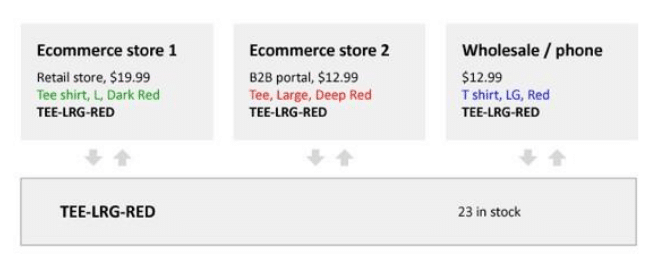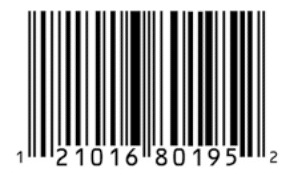Understanding Stock Keeping Units (SKUs)

Good product management starts with unique SKUs. But what are they? And how do you create them? This white paper helps you understand SKUs—from how they work to what makes them so essential to retail and wholesale success.
What you’ll learn:
- What is a SKU number?
- What SKU stands for
- What your business will gain by using SKUs
- The benefits of character and numeric SKUs
- When and how to create your own SKUs
- How SKUs relate to UPCs and EANs
- Answers to the perennial question, “what are SKUs?”
- And more
SKUs: The Backbone of Inventory Management
If you’re like most retailers and wholesalers, you have significant investments in stock, which lies at the heart of your sales, purchasing, and inventory processes. Managing all SKUs effectively is essential for ensuring your business grows and thrives.
A SKU, or Stock Keeping Unit, is a unique identifier assigned to each product, simplifying inventory tracking and management. As highlighted in this SKU guide, these identifiers are vital tools for retailers and wholesalers, enabling them to monitor stock levels seamlessly across systems and sales channels. Your business’s success relies on efficient product management—and efficient product management relies on SKUs.
What is a SKU number?
Every product you sell needs a unique identifier—called a Stock Keeping Unit (SKU)—to differentiate one product from another. Understanding the SKU meaning is essential for efficient inventory management. It’s not enough to assign a single SKU for a t-shirt, for example. Each product variation, such as different colors and sizes, should have its own distinct SKU.
These unique codes ensure your staff, customers, suppliers, and systems all reference the same item. Often referred to as product codes, part numbers, or manufacturer’s part numbers, SKUs are not limited to physical products. You can also assign SKUs to non-physical offerings, such as warranties or service packages, for streamlined management and tracking.
Key Benefits of Using SKUs in Retail and Wholesale
When it comes to inventory management, there are few concepts more important than SKUs. They help you:
- Streamline ordering. When you place purchase orders with suppliers, you’re more likely to get the products you want if you use the SKUs on their price lists and order forms. Also, if you integrate your inventory management software with your suppliers’ systems, you need to use SKUs when you hit reorder points. These common reference numbers ensure both systems are talking about the same products.
- Simplify e-commerce and multichannel integrations. Where SKUs really pay off is when separate software systems are integrated. If, for example, you integrate your e-commerce and ordering systems, you need a single identifier for each product—in each of its variations—to make sure exactly the right product is shipped to the customer.
- Keep all systems up-to-date. When you update the inventory level of a product in your master product database, all systems need to be updated, too. To automate this, all systems need to use the same identifier for each product.
- Expedite business sales. Business customers often quote part numbers or SKUs when they buy. This speeds up their orders and helps reduce mistakes.
- Easily handle terminology differences between systems. Often, the same SKU has different details in each channel you sell in. The large red t-shirt in the example below (SKU “TEE-LRG-RED”) has different descriptions in each of the three systems—making a consistent SKU system indispensable in linking the product data.
Where SKUs are used?
Companies will use SKUs in the following places:
- Retail Stores
- Warehouses
- Catalogs
- E-commerce Stores
- 3rd party fulfillment centers
Where do SKUs come from?
This depends on who manufactures the product:
- If another company is the manufacturer. Products from other manufacturers may include bar codes with 8-, 12-, or 13-digit numbers underneath. Called global trade identification numbers (GTINs), universal product codes (UPCs), or European article numbers (EANs), these unique numbers are generated by central agencies and purchased by manufacturers to put on their products. Because every product variant has its own EAN or UPC codes, these numbers also can be used as SKUs. Similarly, you can use a book’s international standard book number (ISBN)—the 10- or 13-digit number printed with the bar code on the cover—as your SKU.However, sometimes a small business won’t use these codes – in which case, it’s up to you to create one in your inventory management system!
- If you are the manufacturer. Whether you have your own retail store, sell through Amazon, or are a wholesaler, it’s a good idea to buy UPCs for your products. You should print labels for them, and make sure you to always refer to them.
SKUs vs UPC codes
SKU (Stock Keeping Unit) and UPC (Universal Product Code) are both codes used to identify products. However, there are some differences between the two. SKUs are used for internal use while UPCs are used for external use. SKUs are unique alphanumeric codes assigned to individual products that appear on products as unique identifiers and are used to optimize inventory management and make tracking more efficient. On the other hand, UPCs are 12-digit codes that are purchased and licensed by the product manufacturer from GS1 US — a nonprofit organization responsible for upholding global business standards — and is not generated by the retailer. UPCs correspond to scannable barcodes and are a type of Global Trade Item Number (GTIN) that enables the accurate tracking and sale of products as they move through supply chains.
In summary, SKUs are for internal use while UPCs are for external use. Both are useful for tracking and managing inventory, monitoring supply chains and analyzing sales trends.
How to Create a SKU: Essential SKU Rules and Guidelines
If the products you buy from your suppliers don’t have SKUs or you manufacture your own products, you can create your own. You also might want to create customer-facing SKUs—even if your suppliers give you SKUs—to disguise your supply chain. This is particularly helpful if you’re competing with other online retailers and have different pricing systems.
Guidelines for creating SKUs:
- Keep them short. A SKU needs to be 32 characters or fewer so that the same data fits in all systems.
- Make them unique. Don’t reuse SKUs from previous seasons.
- Never start a SKU with a zero. When you work with SKUs in Excel, it drops the first character if it’s a zero, which causes problems.
- Avoid ambiguous characters. Letters such as I, L, and O are easily confused with numbers.
- Don’t confuse them with other identifiers, like model numbers.
Stay simple. Stick with numbers and capital letters with separators such as dashes or dots. Also, avoid spaces and slashes, which some systems don’t handle well.
Character vs. Numeric SKUs: Which Works Best for You?
When you plan your SKUs, you need to decide whether to use long character codes or short numeric codes. Each has its benefits.
Character SKUs can be more meaningful, so you can use them to filter reports and product lists into brands, seasons, styles, and more. For example, here’s what character SKUs for a Nike echostar t-shirt—which comes in three sizes and two colors—look like:
NK-TEE-ECHO-SM-RED
NK-TEE-ECHO-ME-RED
NK-TEE-ECHO-LG-RED
NK-TEE-ECHO-SM-GRN
NK-TEE-ECHO-ME-GRN
NK-TEE-ECHO-LG-GRN
Notice that character SKUs like these enable you to see immediately which product is which. This is particularly helpful when you’re looking through the stock in your online store, as you won’t have to cross reference a product list as frequently.
On the down side, character SKUs are long, so they can make picking and packing harder. If your picking team works from SKUs, simpler numeric SKUs may be better. Take the warehouse setup pictured below. All SKUs are simple 5-digit numbers, which are easier to pick and easier to read out on the phone when taking or placing orders.
You also can use a combination of characters and numbers in your SKUs. For example, for the echostar tee shirts, you could add a number to the end of the product code: 2013ECH-1, 2013ECH-2, and so on.
What About Bar Codes? How They Relate to SKUs and Inventory
Bar codes are simply graphical representations of numbers or combinations of letters and numbers, so you can create bar codes for any of the identifiers we’ve discussed. The bar codes you see pre-printed on products, however, are almost always the ISBN, UPC, or EAN. Here’s a 12-digit EAN (121016801952):
Bar codes are designed to speed up and reduce errors in Point of Sale (POS) and warehouse operations, and if you only use them within your business, you can use any number to generate the bar code.
If you provide products for dealers to sell to their customers using POS software, you need to label your products with your UPC or EAN—identifiers that they also can use.
SKUs as Essential Tools for Growth
Now that you know what SKUs are, why to use them, where to get them, and how to make sure they’re effective, it’s time to follow Brightpearl’s guidance and implement them across your business. When you do, you’ll take your product management process to a whole new level. From there, multichannel growth is a whole lot easier.



